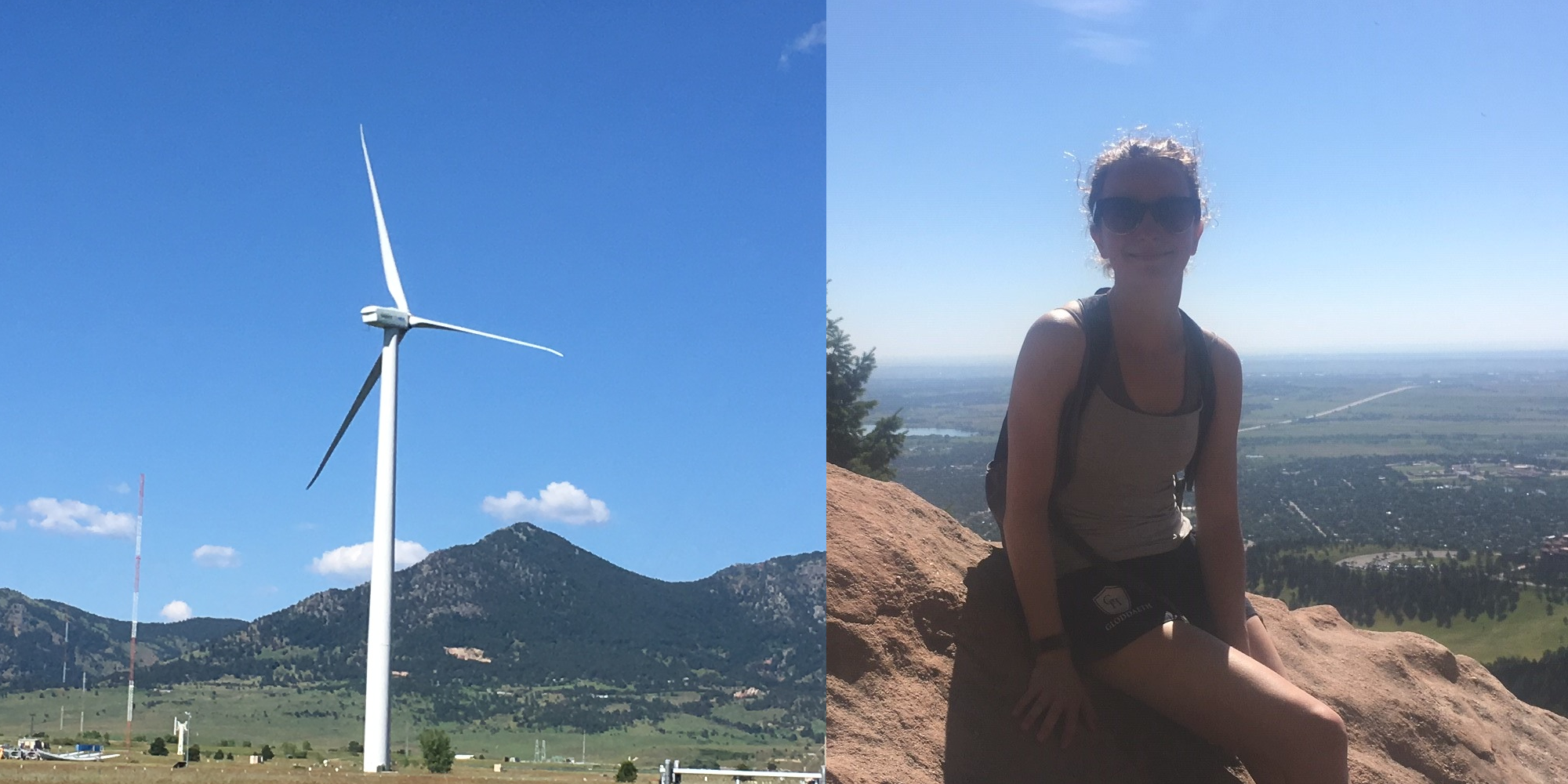At the end of the first year of the CDT, all students must complete two, 8-week ‘mini-projects’ designed to add context to the technical knowledge gained in first-year courses, develop research skills and provide an opportunity to test-drive potential PhD choices. Thanks to a collaborative research programme currently being carried out by the University of Strathclyde, the US National Renewable Energy Laboratory (NREL) and Colorado University (CU), Jennifer Morris was invited to undertake her second mini-project in Boulder, Colorado in Summer 2019. Read on to hear all about her time in the US.
.png)
Boulder is located at the foot of the Rocky Mountains and as such is subject to unique wind fields from the mountains – but, more importantly, it provides excellent hiking terrain and even better pancakes for refuelling. Despite 37°C heat and mild altitude sickness (Boulder is located at 5500 ft above sea level), I soon adapted to the improved views for commuting and working.

The goal of the project itself was to investigate the impacts of turbulence on wind turbine loads, in particular at the drivetrain, with a view to assessing the extent to which turbulence contributes to main bearing failure. Failure of the drivetrain main bearing contributes significantly to wind turbine operations & maintenance costs, but the exact causes and mechanisms of failure are still poorly understood. Theoretical models of main bearing forces are currently being developed at Strathclyde; the collaboration with NREL provided the opportunity to validate some aspects of these models using real turbine data. I therefore spent 8-weeks working with Prof. James Brasseur at CU to analyse meteorological and loading data from the GE 1.5 MW turbine at the NREL National Wind Technology Centre. The majority of our analyses focused on statistical correlations between incident wind conditions and in-plane and out-of-plane bending moments on the drivetrain mainshaft; these forces can then be used to derive main bearing forces using the Strathclyde models. The results were promising, confirming the outcomes of earlier CFD simulations performed at CU and indicating that the nacelle wind speed anemometers may be more reliable than expected for predicting turbine loading – an important result given the severe cost and difficulty of erecting meteorological masts near operational turbines. In-plane mainshaft bending moments (i.e. torque), out-of-plane blade bending moments and tower base bending moments all showed very strong positive correlations with incident horizontal wind speed at the rotor plane. However, out-of-plane mainshaft bending moments, which are hypothesised to be a key contributor to main bearing failures, showed no correlation with horizontal wind speed. It is instead thought that it is asymmetry in the wind field across the rotor plane that most strongly influences these moments. The meteorological data available for this study were not sufficiently detailed to be able to characterise this asymmetry, but work is continuing to further quantify these effects.

The experience of collaborating with the very best turbulence experts and using messy, experimental data was incredibly valuable and I learnt a huge amount about how different industries and institutions approach research. As well as some unenviable tan lines and severe jet lag, I returned to Glasgow with a much deeper understanding of the benefits and limitations of experimental field data and of the joys and frustrations of on-the-ground research. Rest assured that my next academic research trip will most certainly take place in ski season.
